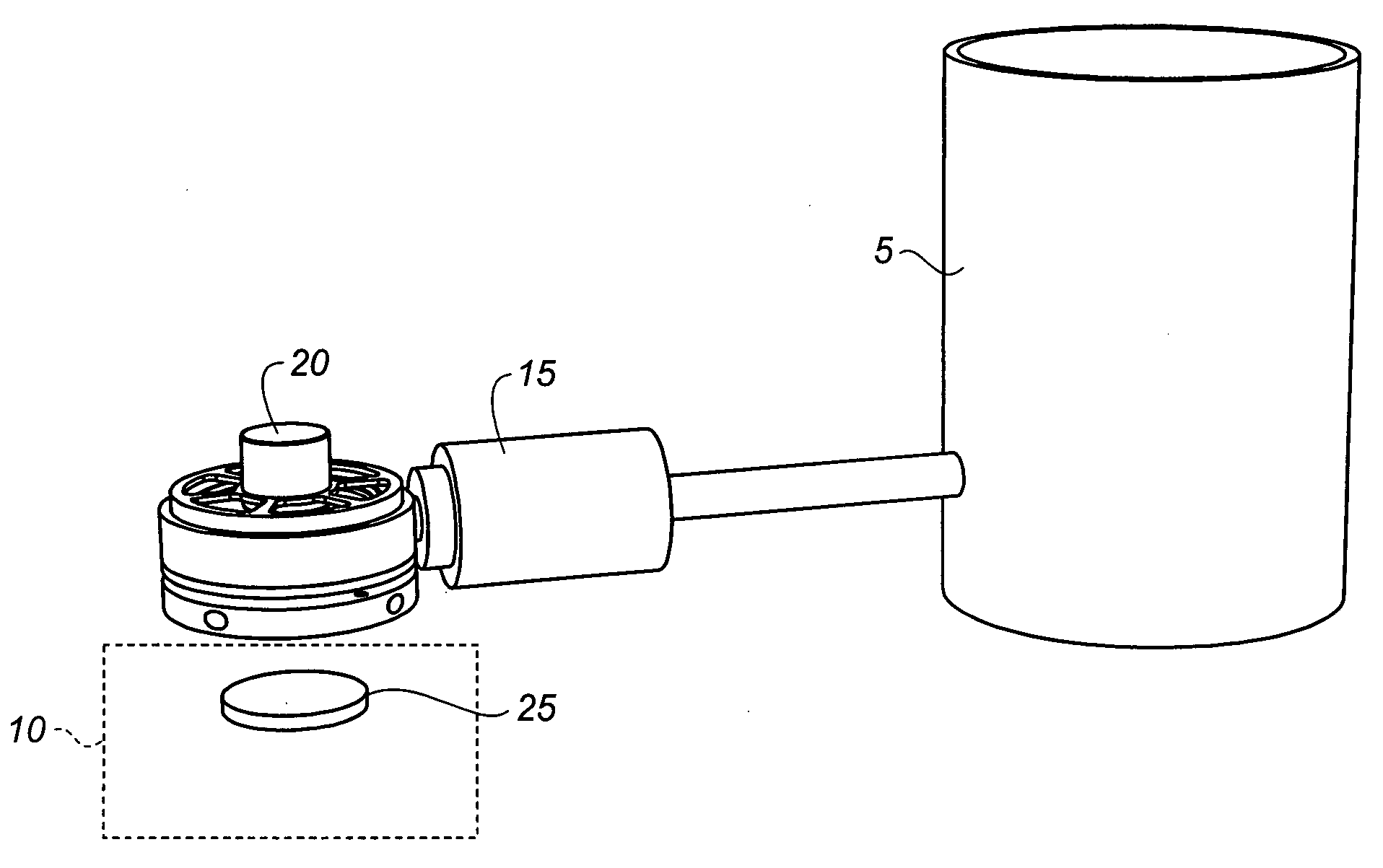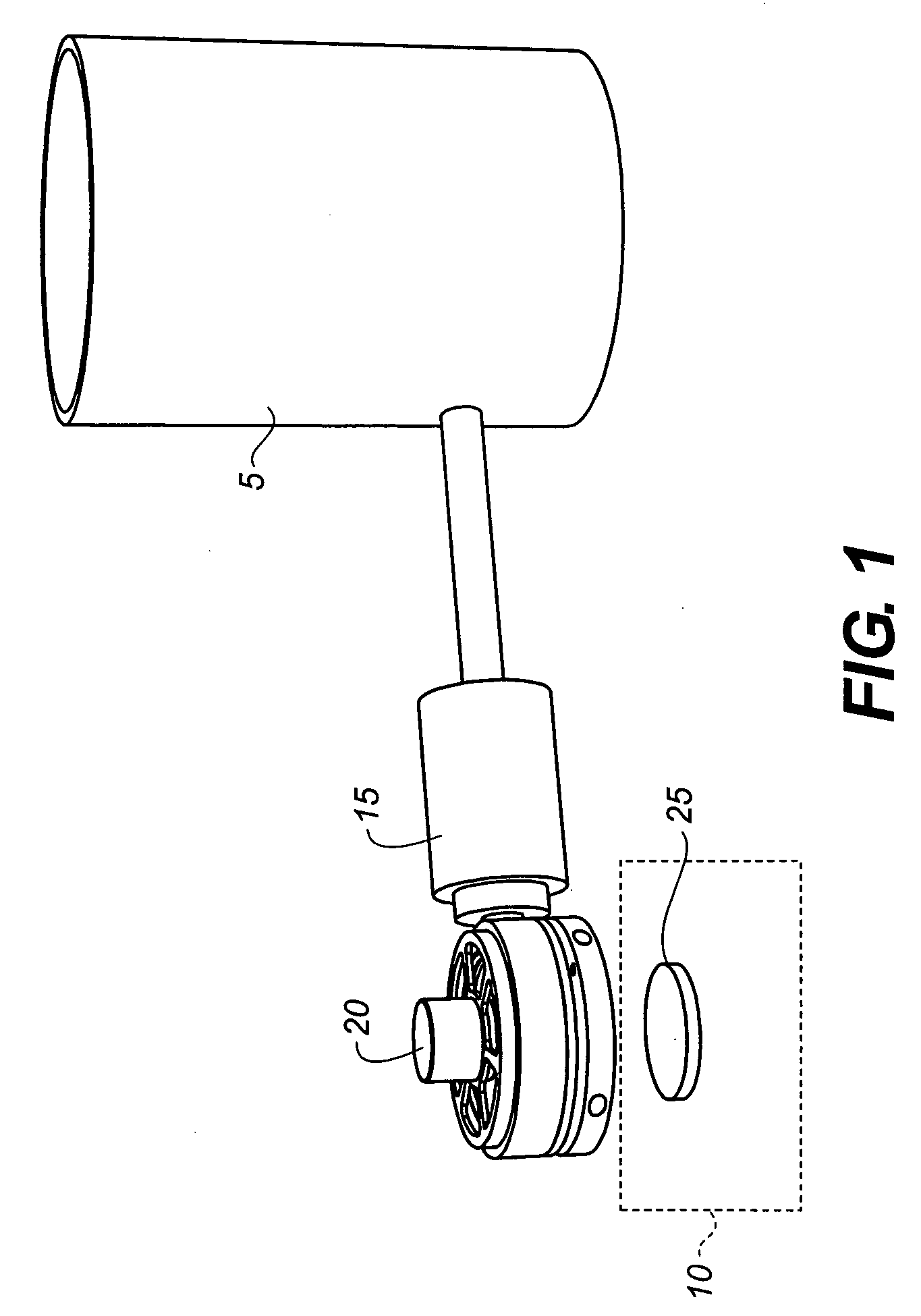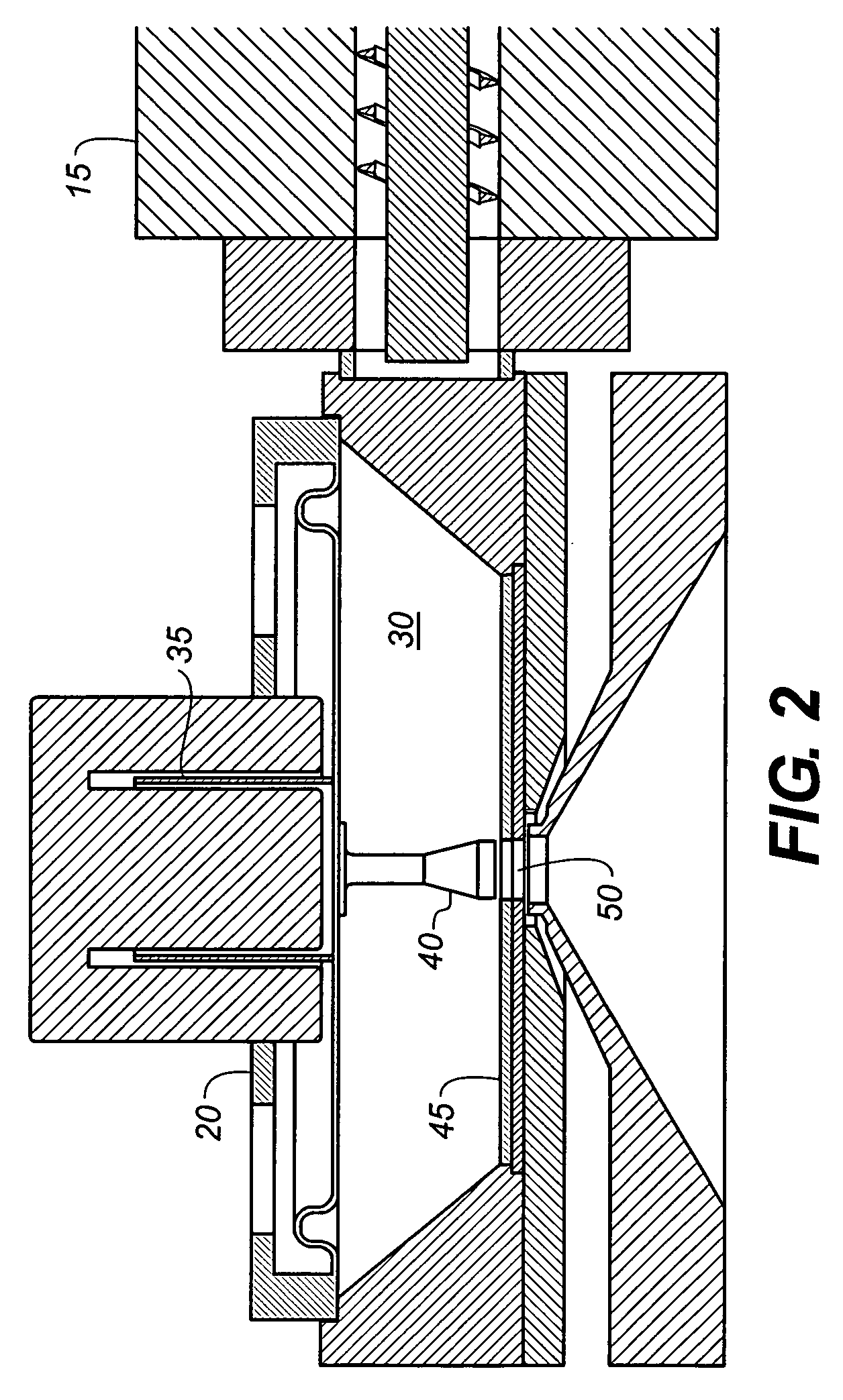Metering material to promote rapid vaporization
a technology of metering material and rapid vaporization, which is applied in the direction of vacuum evaporation coating, chemical vapor deposition coating, coating, etc., can solve the problems of significant degradation, changes in the structure of the molecule and associated changes in the material properties, and the use of organic materials in the manufacture of oled devices are often subject to degradation, so as to achieve stable vaporization rate and reduce the risk of degradation , the effect of allowing linear vaporization ra
- Summary
- Abstract
- Description
- Claims
- Application Information
AI Technical Summary
Benefits of technology
Problems solved by technology
Method used
Image
Examples
Embodiment Construction
[0023] Turning now to FIG. 1, a container 5 is provided and holds a powdered or granular material. This material may be a single component or in alternative embodiments it may contain multiple components. The material can be powdered or granular. The container 5 can be provided with a structure for agitating or fluidizing the material (not visible in figure). There are many well known ways for providing this functionality; the use of a horizontal auger is particularly common. Alternatively, the container 5 may be vibrated by actuators attached to the walls of the container 5. A vaporization zone 10 is provided in a manner that is thermally isolated from the container 5 which contains the powdered or granular material. By thermally isolating the vaporization zone 10 from the container 5, the contents of the container 5 are protected from an elevation in temperature which may lead to degradation. The embodiment in FIG. 1 uses distance to achieve thermal isolation. However, other ways ...
PUM
| Property | Measurement | Unit |
|---|---|---|
| temperature | aaaaa | aaaaa |
| forces | aaaaa | aaaaa |
| Temperature | aaaaa | aaaaa |
Abstract
Description
Claims
Application Information
 Login to View More
Login to View More - R&D
- Intellectual Property
- Life Sciences
- Materials
- Tech Scout
- Unparalleled Data Quality
- Higher Quality Content
- 60% Fewer Hallucinations
Browse by: Latest US Patents, China's latest patents, Technical Efficacy Thesaurus, Application Domain, Technology Topic, Popular Technical Reports.
© 2025 PatSnap. All rights reserved.Legal|Privacy policy|Modern Slavery Act Transparency Statement|Sitemap|About US| Contact US: help@patsnap.com



